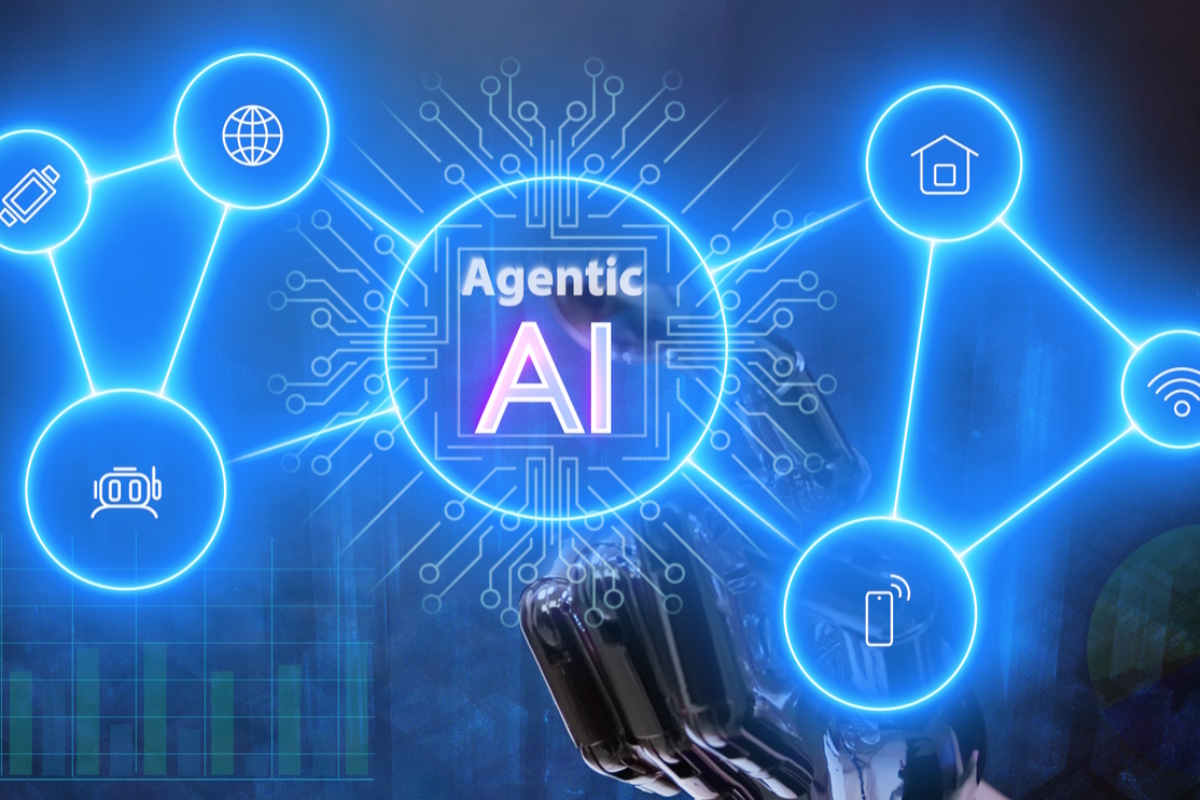Driving business efficiency with agentic AI

Saurav Gupta at InterSystems describes how agentic AI has broken cover and is coming to a business near you soon
Agentic AI is emerging as a transformative force in enterprise technology. Unlike traditional automation or virtual assistants, agentic AI systems act with autonomy, adapt to context, and collaborate with humans to drive business outcomes.
Gartner forecasts that by 2028, a third of all enterprise applications will embed agentic AI capabilities, up from a near-zero adoption in 2024. For business leaders, this marks a pivotal opportunity to reimagine operations, elevate productivity, and unlock new sources of competitive advantage.
Agentic AI represents a leap beyond Robotic Process Automation (RPA) or chatbots. These intelligent agents can interpret data, make decisions, and take action, often in real time. However, the most effective implementations today are human-in-the-loop, combining machine efficiency with human judgment to ensure contextual accuracy, ethical alignment, and regulatory compliance.
Agentic AI with human collaboration
The degree of human involvement in this emerging technology will vary according to each specific use case. In supply chain platforms, agentic AI can continuously monitor supplier data, logistics schedules, and compliance updates. While the agent flags risks and suggests optimisations, humans retain control over critical decisions – ensuring agility without sacrificing oversight.
In the investment and banking sector, agentic AI accelerates research by synthesising vast volumes of financial data and generating personalised insights aligned with individual risk profiles. This enables analysts to focus on strategy rather than data wrangling.
Human-AI collaboration: the new operating model
What agentic AI enables is a shift in organisational thinking. Businesses will look upon their respective workforces as value creators rather than processors.
By eliminating the time previously spent on repetitive analysis, businesses will enable their teams to focus on decisions that drive value and improve their ability to serve customers. They will dedicate more time to achieving innovation and pushing for growth.
Agentic AI and human interaction
Collaboration between employees and agents will be the foundation of success, ensuring human oversight remains at the heart of agentic AI-enabled systems. This will almost certainly require upskilling of workforces, which will blend their own expertise with the AI literacy in a hybrid skillset.
In the future, we are likely to see a shift from interacting with AI through screens and dashboards to more natural forms of communication, including everyday speech or text. Chatbots will become more sophisticated in the way they answer these queries, even as they become more complex. Aided by advances in prompt engineering, enterprise-level agentic AI networks will adapt themselves to each organisation’s workflows.
Organisations must, however, implement systems with AI agents that operate within safe and ethical boundaries, aligning with organisational policies and remaining compliant with regulations. Humans will remain essential to this ethical oversight, ensuring agentic AI-enabled systems adhere to standards and remain within the scope of acceptable risk.
Laying the right data foundations
Agentic AI is only as powerful as the data it consumes. Large Language Models (LLMs) are prone to hallucinations and outdated outputs without access to real-time, contextual data. To mitigate this, organisations must:
- Unify data across silos
- Ensure real-time data availability
- Implement robust data governance
- Maintain auditability and transparency
A trusted, connected data infrastructure is essential for agentic AI to deliver accurate, explainable, and actionable insights.
A new, smarter approach to data
This is where a data fabric approach comes into its own. It acts as a smart data layer that connects and manages data from all an organisation’s systems in real time, eliminating data fragmentation. It seamlessly integrates every source, ensuring consistency and accessibility. By employing techniques of metadata management, knowledge graphs, and using semantic layers, the data fabric adds context and meaning to data.
This may sound arcane, but it enables AI agents to understand the relationships between different data points, fulfilling the technology’s basic requirements. It supplies the unified, harmonised data that AI models need to deliver accurate insights for decision-making and task automation.
A centralised data architecture achieved by a data fabric approach, combined with a data governance model, allows businesses to share data and integrate it across the entire organisation. This architecture not only supports scalability but also ensures compliance, security, and cross-functional collaboration, key priorities for any executive team.
The right architecture is essential
As agentic AI systems gain autonomy, governance becomes non-negotiable. Organisations must define ethical boundaries, align AI behaviour with corporate policies, and ensure compliance with evolving regulations. Human oversight remains essential to monitor risk, validate outputs, and maintain trust.
For leaders, the path forward is clear:
- Invest in foundational data infrastructure. Prioritise real-time, governed, and explainable data systems
- Champion workforce transformation. Upskill teams to collaborate effectively with AI agents
- Embed AI governance into enterprise risk frameworks. Ensure ethical, compliant, and transparent AI operations
- Pilot agentic AI in high-impact areas. Start with use cases that offer measurable ROI and scalability
Agentic AI is not about replacing people; it’s about extending what they can achieve. By freeing teams from routine tasks and enabling smarter decision-making, businesses can unlock innovation, accelerate growth, and build a future-ready enterprise.
The time to act is now. Those who lay the right foundations today will lead the market tomorrow.
Saurav Gupta is Engineer Lead at InterSystems
Main image courtesy of iStockPhoto.com and PonyWang

Business Reporter Team
You may also like
Most Viewed
Winston House, 3rd Floor, Units 306-309, 2-4 Dollis Park, London, N3 1HF
23-29 Hendon Lane, London, N3 1RT
020 8349 4363
© 2025, Lyonsdown Limited. Business Reporter® is a registered trademark of Lyonsdown Ltd. VAT registration number: 830519543





